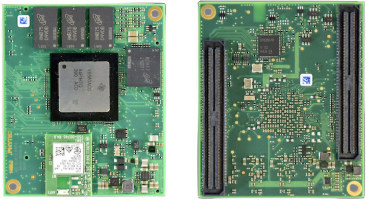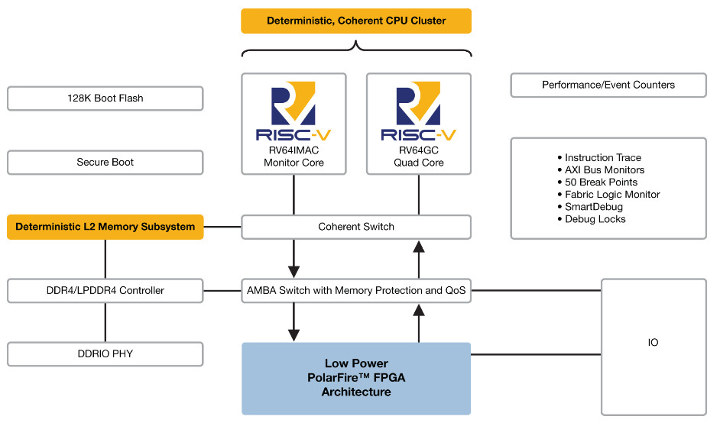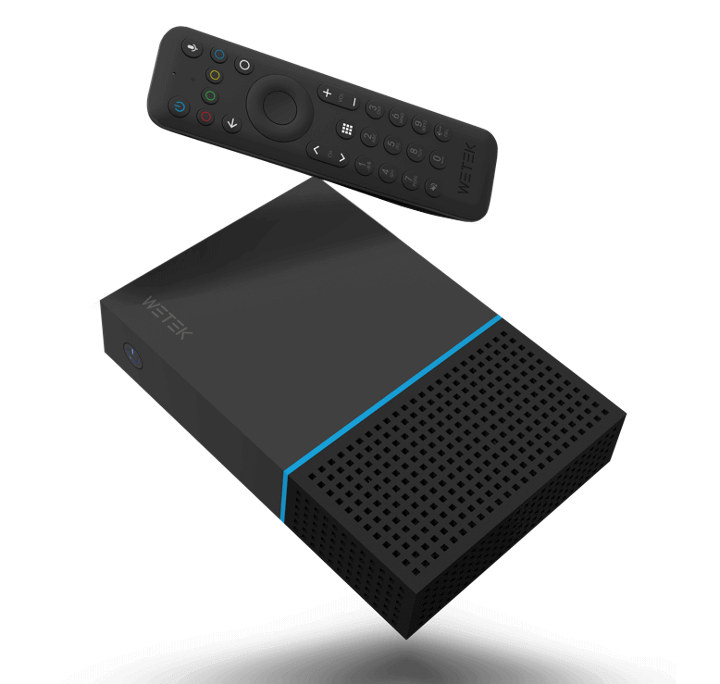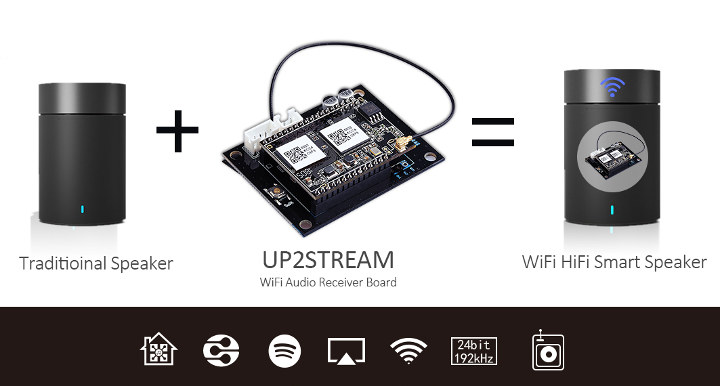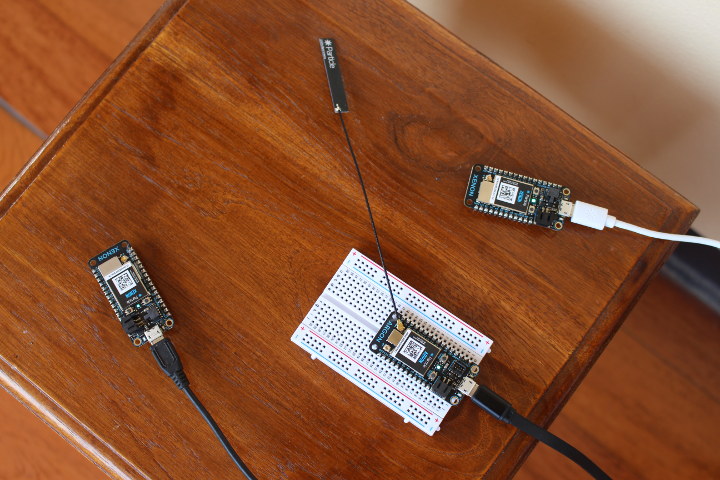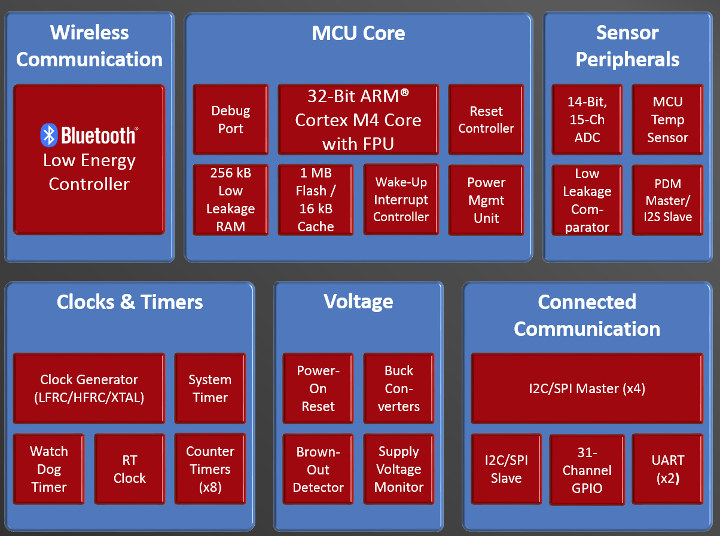We already knew Texas Instruments was working on AM654 processor, the first 64-bit Arm SoC from the company, featuring four Cortex A53 cores, a PowerVR SGX544 GPU, dual lock-step capable Cortex R5F cores, and interfaces targeting industrial applications. Now at least one company has announced a system-on-module based on the solution. PHYTEC phyCORE-AM65x is equipped with AM654x processor, DDR4 and ECC DDR4 memory, up to 32GB eMMC flash, as well as built-in Ethernet, WiFi, and Bluetooth connectivity. phyCORE-AM65x specifications: SoC – Texas Instruments Sitara AM65x with 4x Arm Cortex-A53 cores, dual-core Arm Cortex-R5F MCU subsystem, PowerVR SGX544 GPU, 6x PRU-ICSSG System Memory – DDR4 with support for discrete DDR4 ECC Storage – Up to 32GB eMMC Connectivity Optional 2.4 or 5GHz Certified WiFi Solution 10/100/1000 Mbit/s Ethernet PHY on SOM Board-to-board connectors – 2x “high-density PCB interconnects” Dimensions – 65 x 55 mm The company provides Linux (Yocto Project), Android, […]
MicroSemi Introduces PolarFire FPGA & RISC-V SoC
In the past we’ve covered SoCs comprised of Arm cores and FPGA fabric via Xilinx Zynq-7000 series SoCs and Zynq UltraScale+ series MPSoCs, respectively featuring up to two Arm Cortex A9 cores, and up to four Cortex A53 cores. MicroSemi has now announced an alternative, not based on Arm cores, but instead based on SiFive U54-MC RISC-V cores combined with PolarFire FPGA fabric. PolarFire FPGA RISC-V SoC key features & specifications: FPGA – Microsemi PolarFire FPGA Processor Cores – Up to 4x SiFive U54-MC RISC-V cores clocked at up to 1.5GHz (performance similar to Cortex-A35 cores); 28nm process Deterministic Coherent Multi-core CPU Cluster Deterministic L2 Memory Subsystem System Memory I/F – Integrated DDR4/LPDDR4 Controller and PHY Storage – Secure Boot, 128K Boot Flash Debug capability Rich I/Os Low Power – Low static power; power optimized transceivers, up to 50% lower power compared to SRAM based FPGAs So we don’t have […]
WeTek Air Android TV 4K HDR Set-Top Box Comes with DVB-T2/C, DVB-S2 or ATSC Tuners
WeTek was one of the first manufacturers to launch Android set-top boxes with built-in tuners starting with WeTek Play, later followed by WeTek Play 2 model a few years later. In recent years, the company also introduced other Android media devices for the business sector with WeTek Hyperion 4G LTE Android TV TV box, and WeTek Nix with all DRM required for the IPTV market. But it appears WeTek is coming back to the consumer market with their Google certified WeTek Air TV box running Android TV, and equipped with DVB-T2/T/C (Europe), ATSC (US), or DVB-S2 (Worldwide) tuner. WeTek Air hardware specifications are pretty similar to their WeTek Play 2 model, but with various improved features thanks to a new processor: SoC – Quad core Arm processor (Likely S905D, TBC) System Memory – 2 GB DDR4 Storage – 16 GB eMMC flash + micro SD card slot Video & Audio […]
Up2Stream WiFi Audio Receiver Module Targets DIY Wireless Speakers
If you own a set of very good speakers, and are interested in making them smarter, Arylic Up2Stream WiFi audio receiver module may be a solution to look into. The module allows to make your own DIY wireless speakers by adding WiFi connectivity, and features such as multiroom, AirPlay, DLNA streaming, Spotify, and Internet radio streaming. Up2Stream (WA31) hardware specifications: SoC – MediaTek MT7688AN MIPS processor @ up to 580 MHz System Memory – 64MB DDR2 Storage – 16MB flash Connectivity – 2.4GHz 802.11 b/g/n 1T1R WiFi up to 150 Mbps with 5 dBi I-PEX antenna Audio – 24-bit / 192 KHz decoding, 20 Hz – 20KHz frequency range, 4-pin speaker connector with 2.0mm pitch USB – 1x USB 2.0 port port Power Supply – 5VDC / 1A via 2-pin header (2.0mm pitch) Power Consumption – 160 to 320 mA Dimensions – 55.21 x 41.37mm The module ships with a […]
Xiaomi Mi A2 Review – Part 1: Unboxing, Firmware Update, Antutu
I’ve been using Xiaomi Mi A1 smartphone for well over a year, and during my initial review I was quite satisfied with the phone, and over time I was also pleased to receive regular firmware updates (monthly), and even an update to Android 8.0 and 8.1. Eventually, I found out the camera would be work that well in all situation as you can see from photos in that post, and a few months ago, I broken the display during a cycling trip, and eventually the phone basically died after one year due to an issue with the eMMC flash that become unbearably slow. I intend to use it at least for 18 months, since we can expect firmware update during that time frame. But it was not meant to be, and I was due for a new phone. Xiaomi Mi A2 / A2 Lite smartphones were launched in August, and […]
iMortor 36V-X Wheel Converts your Bike into an Electric Bicycle for $200
This post will be a little off-topic, but I’ve just found out an interesting product I did not know existed. You’ve probably all seen electric bicycles, but YUNZHILUN iMortor 36V-X wheel allows you to convert your existing bicycle into an electric bicycle with up to 50 kilometers range by simply replacing the front wheel. The electric motor and battery are all built into the wheel, and GearBest sells for $199.99 plus shipping to customers based in Europe. iMortor 36V-X specifications: Wheel Size – 26″ Range – 25km mileage in pure electric power mode. 40 – 50km in “moped power mode” Motor – 30V 240W permanent magnet brushless DC motor Control driver – FOC (field-oriented control) intelligent drive controller Thumb gear shifter with 5 gears Smartphone Connectivity – Bluetooth 4.0 and USB for charging. Battery – 36V 115.2Wh lithium-ion battery Dimensions – 66.00 cm ∅ x 10.00 cm Weight – 11.57 kg […]
Particle Mesh Networking Review – Part 2: Getting Started Guide with Argon & Xenon
I’ve recently received a Particle Mesh IoT Development Kit with one Argon WiFi + Mesh (802.15.4) board acting as gateway, three Xenon Mesh boards, and various sensors and accessories. I’ve already showcased the hardware in the first part in the review, so in this post I’ll post my experience getting started with Particle Mesh networking using the kit. Beside the kit, you’ll need a few micro USB cables, a mobile phone running Android or iOS, a reliable Internet connection (more on that later), and a host PC for programming and debugging potential issues. Setting Up Particle Argon & Xenon boards First we’ll need to configure / setup the boards. Go to https://setup.particle.io to login or create an account if you don’t already have one, and you should be brought the following page. Select Mesh, and you’ll be asked to setup a gateway first. Any of the boards from Particle Mesh […]
Ambiq Apollo2 Blue Ultra Low Power MCU adds Bluetooth Connectivity
Ambiq Micro unveiled their ultra-low power Apollo MCU back in 2015 with claims of Cortex-M4 performance at Cortex-M0+ energy efficiency by leveraging SPOT (Subthreshold Power Optimized Technology) technology that allows operating the microcontroller at very low voltages (less than 0.5V). Since then the company introduced Apollo2 MCU with 10 μA/MHz power consumption, but still a generic purpose microcontroller. Earlier this year, the company unveiled a new version of Apollo2 microcontroller adding Bluetooth connectivity, and allowing Bluetooth applications that last years on a charge. Meet Apollo2 Blue. Apollo2 Blue key features and specifications: Arm Cortex-M4 Processor up to 48 MHz with FPU, MMU, wake-up interrupt controller with 32 interrupts Ultra-low power memory Up to 1 MB of flash memory for code/data Up to 256 KB of low leakage RAM for code/data 16kB 1 or 2-way Associative Cache Bluetooth 5 Low Energy RF sensitivity – -95 dBm TX: 5mA @0 dBm; RX: […]


